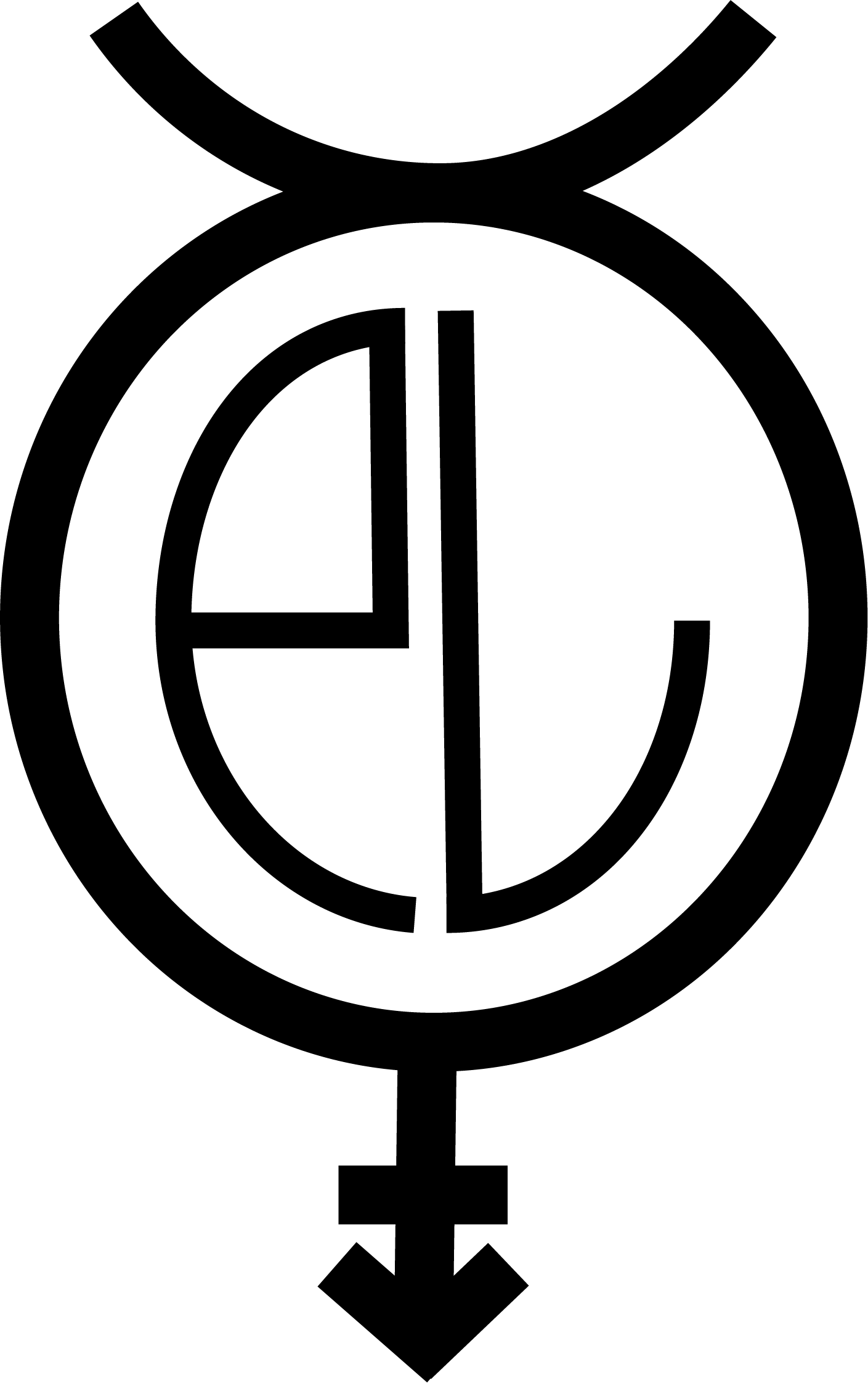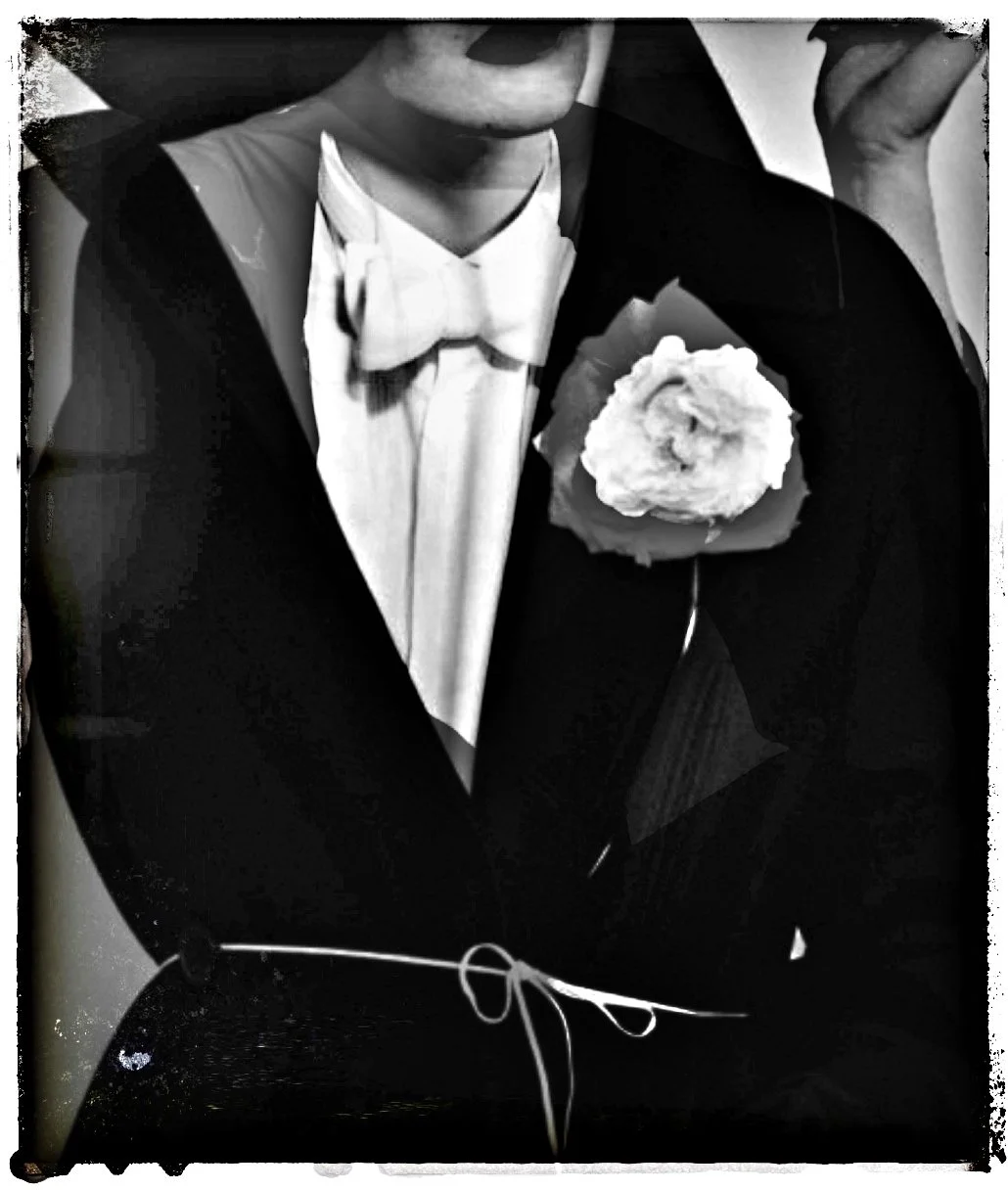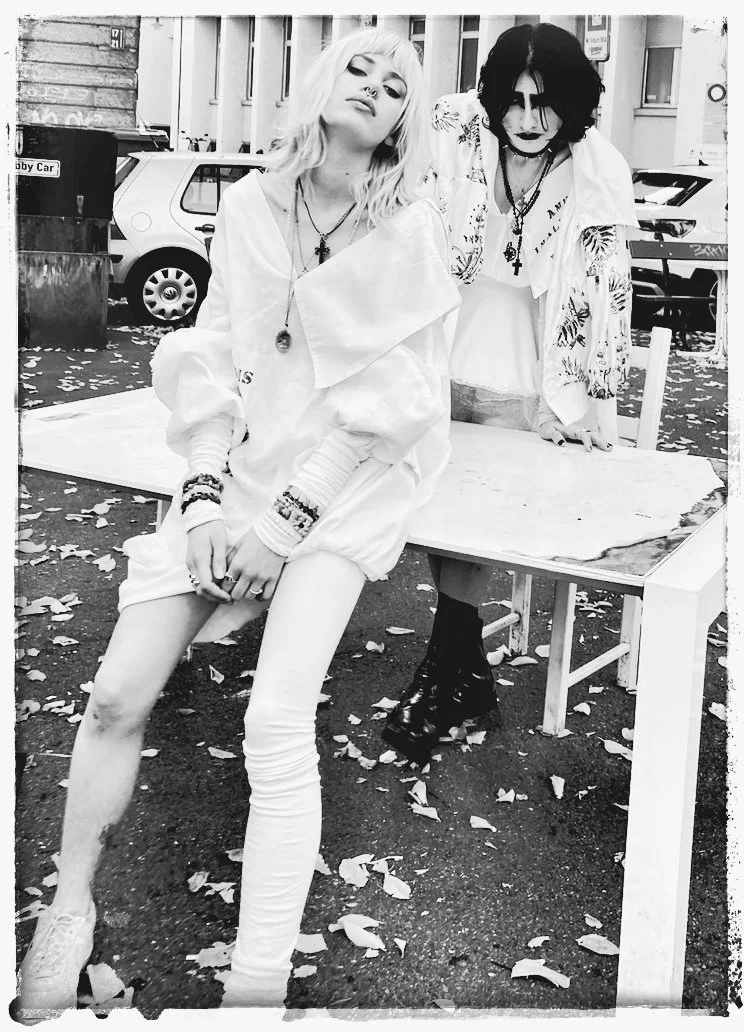The death of rules in fashion: Androgyny as the timeless luxury
Fashion has always been a reflection of society´s shifting values, a space where personal expression meets cultural upheaval. We all know that. As we enter 2025, one prevailing force in the style world is impossible to ignore: androgyny. It is not simply a passing moment; it is the evolution of fashion itself - a reflection of freedom, fluidity, and the erasure of outdated norms. Androgynous fashion is more than a trend; it is an elegant rebellion, a sophisticated refusal to be pigeonholed into rigid categories of masculinity or femininity.
Androgyny in fashion isn’t merely a fleeting trend or artistic statement. It is a seismic shift in how we understand garments, identity, and self-expression. What makes it groundbreaking now, more than ever, is its universality, its democratization, and its ability to dismantle outdated rules with quiet sophistication.
This shift was powerfully evident at the most recent New York and Paris Menswear Fashion Weeks. Designers like Dries Van Noten and Charles Jeffrey´s Loverboy, among others, showcased androgyny not as a fleeting idea but as proof of its permanence. Long rooted in fashion´s history, androgyny now stands as a central force - an enduring testament to style´s ability to dissolve boundaries and reflect the freedom of self-expression. On the runways, it wasn´t just a concept; it was a declaration that androgyny is here to stay.
Van Noten´s collection, in particular, felt like an ethereal nod to Marlene Dietrich herself (original pictures used for the collage: Willy Vanderperre & unknown)
Icons of Androgynous Fashion
But androgynous style isn´t new - it has been around for ages, and not just on the runway, popping up when the world needed it most. And let´s not forget the icons who’ve been wearing it all along. Marlene Dietrich, David Bowie? Timeless. Genesis P-Orridge, Tilda Swinton? Legendary. Zendaya, Timothée Chalamet? Iconic. These are the people who have redefined what it means to dress with freedom. They’ve never been afraid to play with masculine and feminine elements, and in doing so, they´ve inspired generations of people to experiment with their own wardrobes, without fear or judgment.
These figures embrace androgyny with such grace, blending garment, colours, and silhouettes in ways that feel fresh, exciting, and entirely individual. They remind us that fashion is an expression of who we are, not who society thinks we should be.
In the most intimate sense, androgynous fashion is about the individual reclaiming their narrative and - through the art of clothing - expressing a deeper, more authentic sense of self. It is a quiet but determined act of resistance against the arbitrary confines imposed by traditional gender norms. What began as a whisper in the fringes of fashion now speaks with the force of a movement - and it has redefined what luxury can mean in the 21st century.
A Revolution of Elegance
The allure of androgynous fashion lies in its ability to blend opposites into something refined, something elevated. It challenges our assumptions, not by rejecting femininity or masculinity but by elevating them into an ambiguous, effortless newness. The key here is fluidity: androgyny offers no rules to follow, no prescribed ways of dressing. It thrives in its freedom - freedom from expectations, from labels, from limitations.
What is remarkable about this revolution is how it simultaneously celebrates individuality while rejecting conformity. Androgynous fashion is luxury that transcends gender, creating a new narrative about what it means to wear garments. It invites the wearer to step into a more expansive, more liberated form of self-expression, one that is sophisticated and entirely their own.
The Aesthetics of Androgyny: Fluidity in Fabric
The excitement of androgynous fashion lies in its fluidity. It is not about neutralizing style; it is about amplifying individuality. Imagine perfectly tailored wool trousers that could be styled with an oversized silk bomber or a structured trench that feels equally at home over a flowing sleek silk slip dress or a crisp linen-bamboo shirt on every-body. It is a wardrobe that invites you to move seamlessly between different styles and textures, to create a look that feels truly yours. It is about a wardrobe that allows you to seamlessly move between silhouettes, fabrics, and styles - garment that works as a canvas for self-expression rather than a rulebook.
This is not about “unisex” garments - far from it. Androgynous fashion does not aim to erase the distinctions between male and female but to elevate the conversation around those distinctions. By allowing masculinity and femininity to coexist in a more nuanced way, it offers us a new kind of luxury - one that celebrates the unique, the unconventional, and the brave. It is a deliberate move away from the static, the traditional, and the safe.
Luxury, in this sense, is not just in the materials - though that, too, is key - it is in the idea. The idea that we are not confined by the codes that have governed what we wear for centuries. The idea that fashion can be, as fashion should be, a reflection of who we are now - complex, dynamic, labyrinthine, and unapologetically ourselves.
Androgyny is For All Bodies
What is truly striking about androgynous fashion today is its liberation from the antiquated notion that only the rail-thin or angular can embody its essence. Once confined to an aesthetic of stark jawlines and impossibly lean frames, androgyny has evolved into a far more inclusive, fluid language of style.
Now, it is about effortless combinations that transcend body type. It is not about adhering to a prescribed ideal but about curating pieces that feel as natural as they are empowering. When clothing evokes that quiet confidence, that sense of ease - the kind that invites you to pause and appreciate your reflection - you know you very well arrived.
Charles Jeffrey Loverboy´s collection added a bold, colourful homage to androgyny (© of the source video belongs to the rightful owner)
Androgyny in the Spotlight
This evolution of androgynous fashion was unmistakably evident in the contemporary tributes to timeless icons of fluid style by Dries Van Noten or Charles Jeffrey Loverboy at Paris Menswear Fashion Week this January. Van Noten´s collection, in particular, felt like an ethereal nod to Marlene Dietrich herself, blending dandyism with a delicate fragility that mirrored the current political moment. His designs paid homage to Dietrich´s iconic mix of poise, power, and vulnerability, while dismantling the constraints of gendered expectations.
Tuxedos, a staple of Dietrich´s wardrobe, were reimagined as versatile, fluid pieces - conveying a universal appeal that bypassed conventional gender divisions. Oversized flower brooches and dramatic bows softened the garments, imbuing them with romance, while the black-and-white palette evoked timeless elegance.
What made Van Noten´s collection particularly compelling wasn´t its novelty, but its enduring relevance, His work wasn´t just about the Zeitgeist - it was about the timelessness of true style. As Dietrich herself embodied, real elegance doesn´t fit neatly into boxes; it transcends categories and lives on, undefinable yet unmistakable. These pieces didn´t belong to one gender, age, or body type; they existed for anyone who saw themselves reflected in them.
In a similar vein, Charles Jeffrey Loverboy´s collection added a bold, colourful homage to androgyny, presenting an evergreen take on fluidity with a burst of energy. Known for his eccentric, playful use of colour and shape, Jeffrey blended streetwear-inspired elements with couture-level craftsmanship, creating garments that celebrated the freedom to express identity without restriction. His designs - vivid, whimsical, and fearless - embodied the very essence of contemporary androgyny,: a celebration of individuality and an embrace of boundless possibility. Yet, like Van Noten, Loverboy´s work hinted at the fragility of self-expression in today’s unpredictable world.
The Politics of Dressing: Androgyny as a Symbol of Freedom
Why political? Androgynous fashion is profoundly political. In a world where gender equality and identity have become central to cultural discourse, fashion has a unique role to play. Androgynous fashion transcends mere aesthetics; it is a powerful symbol of freedom and democracy. In an era focused on identity and equality, androgyny challenges gender norms and offers a vision where self-expression knows no bounds.
What makes androgynous fashion so compelling is not merely its aesthetic appeal, but its inherent democracy. It is not a style reserved for the avant-garde or those willing to take risks, but a movement that invites everyone - regardless of gender, background, or body type - to participate.
This accessibility is what makes androgynous fashion more relevant than ever in a world that should shift towards equality and inclusivity and not the other way around. Fashion has always reflected societal change, and androgyny is its most powerful response yet to a growing demand for freedom, individuality, and representation.
Breaking Free from Boundaries: A Democratic Motion
At its core, androgynous fashion is democracy in motion. It transcends borders - of gender, size, age, culture, and even geography - reminding us that we are one world, one human family. This is not about exclusivity or fleeting trends; it is about timeless pieces that reflect individuality and offer freedom.
In times of uncertainty, when democracy and unity feel increasingly fragile, fashion becomes a subtle yet profound form of resistance. Androgyny is more than an aesthetic; it is a statement of connection and possibility. It defies the construct of identity thet divide us, asking instead: What binds us together? It offers a space where we can dress without rules or fear, where individuality and universality coexist.
Androgynous fashion isn’t just a rejection of binaries; it is a vision of a borderless future - where clothing becomes a symbol of unity, equality, and shared humanity. It reflects a cultural evolution, one that values inclusivity and liberation over conformity. This is the death of rules, the triumph of personal expression over rigid norms.
As the world grapples with its divisions, androgynous fashion invites us to imagine a future unbound by them. It is more than style - it is an emblem of resilience, empowerment, and the enduring belief that we are stronger when we celebrate what makes us both unique and interconnected. It is fashion´s quiet reminder that, beneath the garments, we share a common humanity - and together, we can create a future defined by unity, strength, and boundless possibility.
In a world marked by division and uncertainty, fashion becomes a political act
Dressing for the Future
So…Next time you´re staring at your wardrobe, don´t ask yourself what is for him or for her. Ask: What do I want to wear today? Reach for whatever makes you feel confident, comfortable, and like your most authentic self. If it feels right for you, it is.
This is about more than just garments. Fashion is semiotic - it is a visual language that reflects the cultural and political shifts happening around us. Designers aren´t just setting trends; they are reacting to a world in flux, responding to a collective consciousness that forecasters and cultural movements are shaping. Fashion mirrors society, capturing the undercurrents of a time - whether it is political unrest, a shift in identity, or economic turbulence - and giving it form. What we wear speaks volumes about where we are, where we have been, and where we might be heading.
In a world marked by division and uncertainty, fashion becomes a political act. Designers tap into this collective moment, using clothing to challenge entrenched norms, dismantle rigid boundaries, and force us to reconsider the limits placed on identity and self-expression. It is not just about style - it is about using style as a tool for cultural and political engagement, offering a mirror to the issues that define our era.
So, forget the “should” and dress for what feels right -what excites you, what challenges you. True style is about embracing the freedom to express yourself, without hesitation or restraint. The rules of fashion are finally dead - no longer confined by what designers, forecasters, or trends dictate. Fashion has evolved into a personal, autonomous journey. It is about being independent, rejecting the imposition of labels, and simply being yourself. Fashion is no longer about fitting into categories; it is about expressing who you are and embracing the power of self-expression as a reflection of the cultural and political shifts happening all around us. In a world that thrives on division, style is a reminder that unity, fluidity, and authenticity are always more powerful than conformity.
https://www.youtube.com/watch?v=99HA3VXpwb4
https://www.fhcm.paris/en/collection/dries-van-noten-menswear-fallwinter-2025-2026



